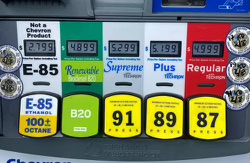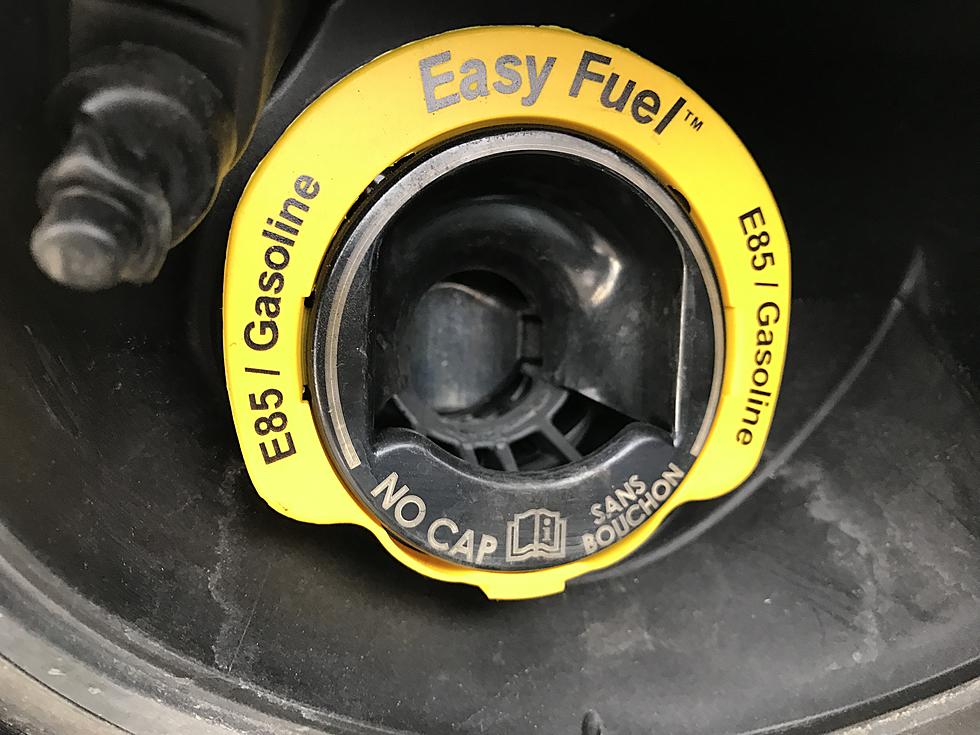E-85 Flex Fuel: Everything You Need to Know

What is E-85 made of compared to regular gasoline?
Most gasoline at the pump these days is a blend of ethanol and gasoline. Regular pump gas, 87 Octane, has up to 10% ethanol and 90% gasoline. E-85 is an increased blend of up to 85% ethanol and only 15% gasoline.
Ethanol is a bio-fuel, while gasoline is a non-renewable fossil fuel. Bio-fuels (high ethanol content) in the US typically come from corn crops and are considered renewable.
Most people therefore consider E-85, which is 85% ethanol, to be carbon neutral. This means the amount of carbon released into the environment while burning this fuel is offset by the amount of carbon dioxide the corn crops consume while growing.
When can you use E-85 in your vehicle?
Most vehicles have a badge on the back signaling the vehicle will run with E-85. When you open your gas door, you’ll see a yellow ring around the gas fill. This yellow ring lets you know you can use E-85 safely.
At the pump, you’ll need to select E-85 fuel and be sure to use the nozzle that is entirely yellow or has a yellow badge.
*Do not use E-85 fuel if your vehicle is not designed for it. This will cause issues.

Is it cost effective to run E-85 in your vehicle?
It depends. E-85 is less energy dense than gasoline, so you’ll go fewer miles for each gallon you use. You’ll typically get about 25% fewer miles per gallon with E-85. However, E-85 is also typically cheaper than gasoline.
To calculate if E-85 is more cost effective than gasoline, check if E-85 is 25% cheaper than gasoline. If flex fuels is 25% cheaper or close to it, it might be a good idea for your budget and the environment to choose E-85 at the pump.
